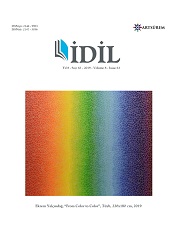Rembrandt’tan Damien Hirst’e Sanatta Hayvan Karkasinin Temsili
The Representation of the Animal Carcass in Art from Rembrandt to Damien Hirst
Author(s): Nur BalkırSubject(s): Visual Arts, Semiology, Aesthetics, 17th Century, History of Art
Published by: Sanat ve Dil Araştırmaları Enstitüsü
Keywords: Rembrandt; Soutine; art; carcass; representation;
Summary/Abstract: Artists have examined methods of representing the reality for centuries. While various ways of representation of truth were explored, some artists tried to reveal the truth itself rather than depicting a similar one. These artists eagerly wanted to break the distance with their subjects and expored ways of incorporating the senses such as the urge of touch and smell. To exist in this World meant to fully experience it instead of recording life from a secure zone. 17th century Western art witnessed artists pushing the limits of the sensory representation in animal depictions. For instance, Rembrandt in his painting Slaughtered Ox, achieved to incorporate the senses of touch and feeling of heavy weight through the thick application of the paint. Rembrandt’s other paintings of the similar anatomical content are similar to the Slaughtered Ox in terms of revealing the what is inside of a living body. Like Rembrandt, artist like Chaim Soutine, Francis Bacon, and finally Damien Hirst depicted the nature as a representation of something beyond the senses. Starting from Rembrandt, this paper will examine how each of these artists achieved to create such absolute genuity in their depiction of the animal carcass.
Journal: İdil Sanat ve Dil Dergisi
- Issue Year: 8/2019
- Issue No: 63
- Page Range: 1415-1420
- Page Count: 6
- Language: Turkish

